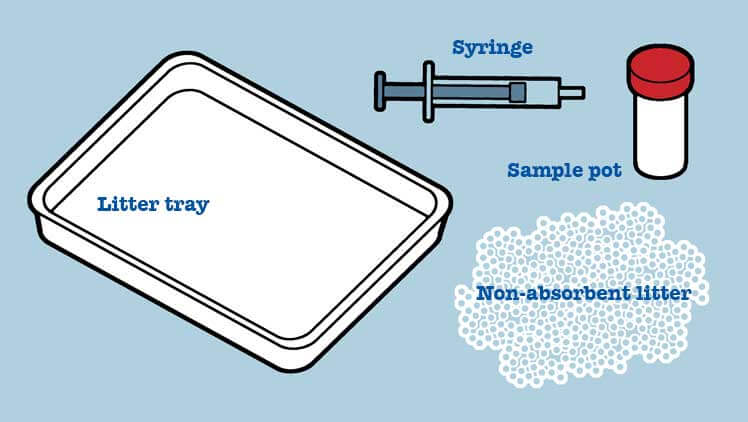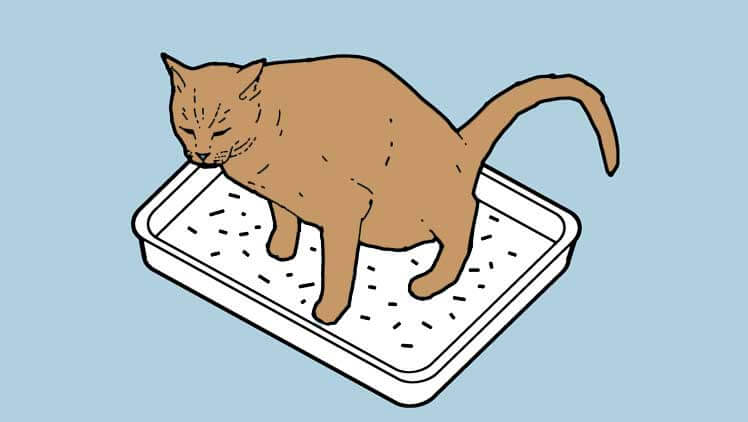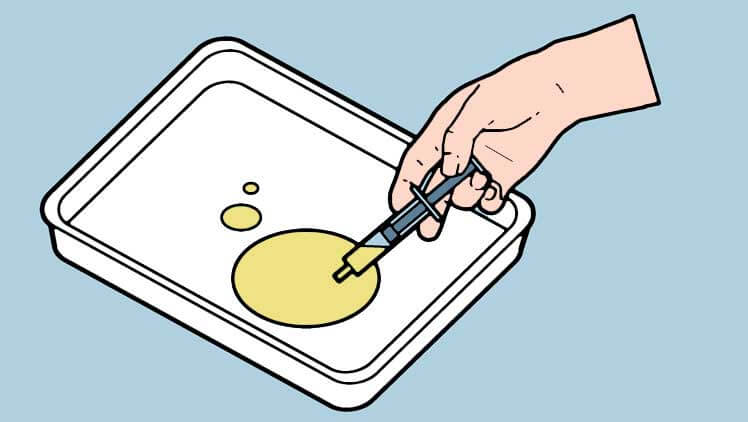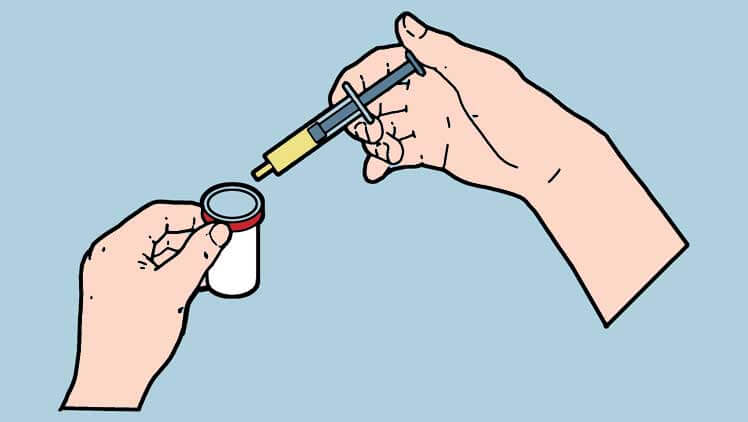Follow this step-by-step guide, with helpful tips and advice, from Petplan veterinary expert Brian Faulkner.

1. Gather the equipment
If you need to take a urine sample from your cat, your vet may be able to provide you with a special kit filled with the items you need or, if you're likely to be testing your cat's urine on an ongoing basis, you can find this equipment from online stores or some pet supply stores. You'll need:
● A special non-absorbent litter, such as special beaded balls or non-absorbent sand
● A clean syringe
● A clearly labelled, sealable sample pot supplied by your vet or provided as part of the urine sample kit
● A litter tray that has been thoroughly cleaned
While some online resources may advise getting your cat to pee directly into the tray or onto paper towels, Brian thinks this is unlikely to work. 'Cats like to have some form of litter to scratch against and will very rarely urinate into a plain litter tray, as they'll worry about getting their feet wet and they like to bury their urine,' he says. 'Beaded balls can be a good way to give your cat the environment she needs to go in, without soaking up the wee itself - which will make it easier for you to collect later.'

2. Relax and give your cat some space
Keep calm, so that your pet doesn't pick up on any stress you might be feeling - 'and don't expect your cat to pee while you're watching,' says Brian. 'Cats are less likely to urinate immediately if they're closed in a room and expected to perform. In fact, it can take several hours for your cat to decide that she's happy with her new litter and is ready to go.' Instead, leave your cat plenty of water and let nature take its course.
Brian's advice is important to remember if you have more than one cat in your household. As the cat you're trying to get a urine sample from is unlikely to use the litter box if she feels pressured to do so, you may need to give her free rein of the house. Keep any other pets away until the deed is done to ensure you end up with a sample from the right pet.


3. Storing the sample
Once your cat has urinated on the non-absorbent litter, her wee should gather at the bottom of the tray. Then, using a clean syringe, collect a sample and place in a clean, sealable pot supplied by your vet or provided as part of the urine sample kit.
'It's important that the sample is tested as quickly as possible,' Brian says. 'Within two to four hours is preferable, as this will provide the most accurate result. If this turnaround time isn't possible, though, make sure to place the sample in the fridge and get it tested within the next 24 hours.'
4. Alternative methods
If your cat usually does her business outside, you may need to wait longer to collect a sample. 'You can get around this by keeping your cat indoors, as eventually she will have to pee,' Brian says. 'But,' he adds, 'making your cat hold on to her urine can cause her bladder to stretch, causing discomfort and irritation. And this could worsen inflammation in the bladder, which may be what your vet is trying to treat in the first place.'
If you find you're struggling to get a sample, don't hesitate to ask your vet. 'We've always got an alternative,' Brian says, explaining that vets can often collect a urine sample by extracting it directly from the bladder using a needle and syringe. 'This is relatively painless, and is particularly useful when checking for a bacterial infection, as it avoids contamination with bacteria that might have come from the environment,' he says.
